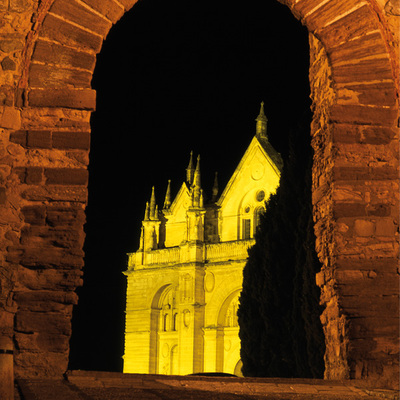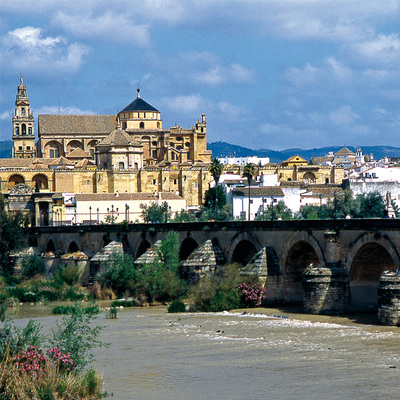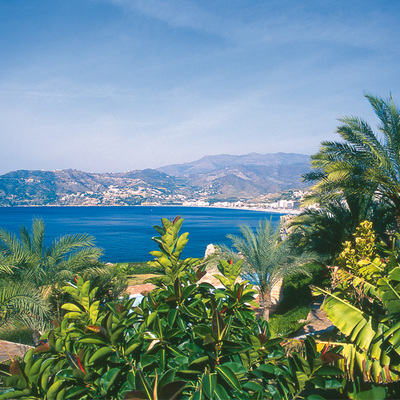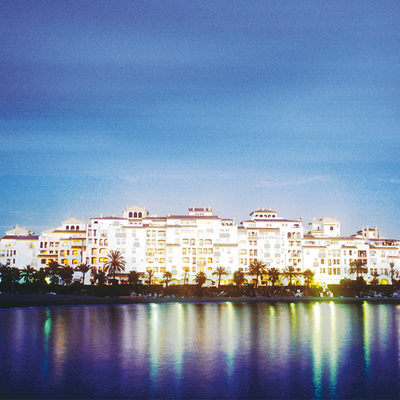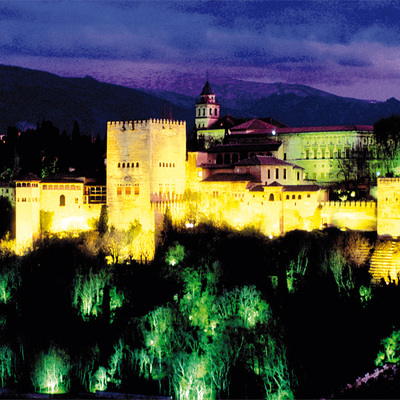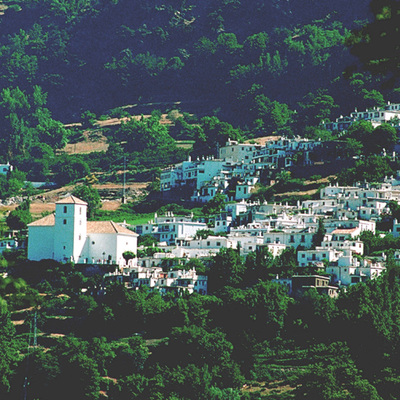Route of the creation: in the footsteps of Chacón
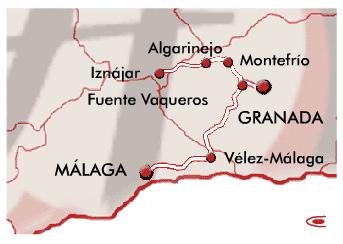
Most of the story of flamenco in Granada takes place in the capital city itself. The neighbourhoods of Albaicín and Sacromonte are the epicentres of the typical flamenco singing known as the "cante jondo", and have witnessed the creation of the "soleá de Graná", "Niño Jun", and the tangos of El Camino and El Cerro. This atmosphere is the wellspring for Antonio Chacón's creation of the style of flamenco singing known as "por granaínas" and "medias".
That's why visitors should make for the Sacromonte caves to experience the genuine article. But another essential stop is in the Albaicín quarter, dropping in at the Peña de la Platería, the oldest "peña" or flamenco club in existence, to listen to their regular recitals. Visit the tavern of Jaime el Parrón, the father ofMarina Heredia, a favourite meeting place for many of the artists in the capital, including stars of the stature of Enrique Morente and his daughter Estrella Morente, Juan Carmona Habichuela, Pepe Habichuela and the Montoyas and the Carbonells, as well as the great flamenco dancer Mariquilla.
Malaga: the starting point. The neighbourhoods of El Perchel and La Trinidad, right where another master, Juan Breva, forged his legend.
The favourable economic conditions of the second half of the 19th century made Malaga a prosperous place, and led to the creation of numerous cafés offering live music. In El Café Sin Techo it is even said that Antonio Pérez de Guzman and General Sánchez Mira presented Tomás el Nitri with the first Golden Key for Flamenco Singing, although it still has to be proved. Flamenco from Malaga was also very popular in the countryside, with the singing associated with the stamping, ploughing and threshing activities of the agricultural workers; and on the sea, with the famous songs known as "marengos" or "jabegote". The inspiration for this creative process can be seen by taking a walk through the neighbourhood of El Palo, with its hustle and bustle of sailors going about their daily work, and passing the time.
The typical local style of singing is the "jabera", a branch of the genre known as the "fandango abandolao". You can see all this in another outstanding shrine to "cante jondo": the Peña Juan Breva, which opened in 1958 and has recently been converted into a flamenco museum. There you can also hear some of the best young flamenco singers in Malaga, as well as seeing the biggest names in the area.
Another stop not to be missed is in the Axarquía region, with its centre for flamenco singing in Vélez-Málaga. And don't miss a visit to the associations of "verdiales" singers. These clubs are common all around the area of Almogía, in the Montes de Málaga and in the central area of Comares.
Another singing style to be found around the area is the "bandolá", whose influence extends to the mountains of Cordoba and the province of Granada. In contrast, the coastal area is completely given over to another type of singing of the type known as the "jabegote", a piece with seafaring lyrics which is today often heard at the end of the "malagueñas".
"La rondeña", another part of the "abandolao" heritage, does not necessarily need to be experienced in Ronda, as it has yet to be proved that its name actually derives from this city in Malaga; it may come from the songs sung in the past to serenade the young women of the town.
After his stay in Malaga, Antonio Chacón spent some time in Granada, where he transformed most of the singing in the area. He served on the jury for the 1922 flamenco competition together, with Manuel Torre and Pastora Pavón, which also included the participation of such outstanding figures as Manuel de Falla and Federico García Lorca.
Federico García Lorca is responsible for coining the concepts of "duende" (a term meaning "state of grace", or "magic"), "sonidos negros" (dark sounds), and "culture in the blood". So a visit to the Granada area could well begin in the places related with the poet, such as his birthplace, Fuente Vaqueros. This is a way to experience the atmosphere that Lorca himself grew up in, and which allowed him to penetrate so deeply into the world of flamenco. Other places on this visit which should not be missed for anyone wishing to experience the type of singing associated with agricultural life are Iznájar, Algarinejo or Montefrío, to name just a few, where you can hear different varieties of the singing style known as "por trilleras" (threshing).



